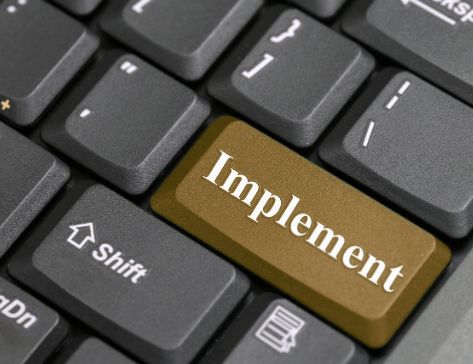
10 Essential Predictive Marketing Tools Every CMO Should Implement in 2025
Predictive marketing tools are revolutionizing how CMOs approach campaign strategy, customer engagement, and ROI optimization in today’s data-driven business landscape. By leveraging advanced analytics, machine learning, and artificial intelligence, these powerful solutions enable marketing leaders to anticipate customer behavior, identify emerging trends, and allocate resources more effectively than ever before. This comprehensive guide explores the most impactful predictive marketing technologies that should be in every CMO’s toolkit.
In an increasingly competitive marketplace, the ability to forecast customer actions and build effective customer-centric strategies has become a critical differentiator. Modern predictive marketing platforms transform vast quantities of customer data into actionable insights, allowing marketing teams to move beyond reactive approaches toward truly proactive engagement strategies that drive measurable business outcomes.

Understanding Predictive Marketing Technology
Predictive marketing leverages historical data, statistical algorithms, and machine learning techniques to identify patterns and predict future outcomes with a high degree of precision. Unlike traditional marketing analytics that focus primarily on what has already happened, predictive tools enable forward-looking decision-making based on probability models.
The core components of effective predictive marketing systems include:
- Data Collection Infrastructure: Systems that gather and integrate customer data from multiple touchpoints
- Advanced Analytics Engines: Algorithms that process data to identify patterns and correlations
- Machine Learning Models: Self-improving systems that refine predictions over time
- Visualization Interfaces: Dashboards that present insights in accessible, actionable formats
- Integration Capabilities: APIs and connectors that enable seamless workflow incorporation
Top 10 Predictive Marketing Tools for CMOs
1. Customer Segmentation and Targeting Platforms
Key Tools: Salesforce Einstein, Adobe Analytics, Amplitude
These platforms use predictive algorithms to identify high-value customer segments and determine which audiences are most likely to respond to specific marketing initiatives. By analyzing behavioral patterns, demographic information, and purchase history, these tools enable hyper-targeted campaigns with significantly higher conversion rates.
Implementation Tip: Begin with a focused use case, such as identifying customers at risk of churn, before expanding to more complex segmentation models.
2. Predictive Lead Scoring Solutions
Key Tools: HubSpot, Marketo Predictive Scoring, Infer
Predictive lead scoring tools analyze thousands of data points to assign probability scores to prospects, helping marketing and sales teams prioritize their efforts on leads most likely to convert. These systems continuously learn from conversion patterns to improve accuracy over time.
Implementation Tip: Integrate your CRM data with your marketing automation platform to create a unified data foundation for more accurate scoring.
3. Content Optimization Engines
Key Tools: PathFactory, BrightEdge, MarketMuse
These predictive analytics tools analyze content performance and audience engagement patterns to recommend optimal content types, formats, and distribution channels. They help marketing teams create more relevant content that resonates with specific audience segments at different stages of the customer journey.
Implementation Tip: Start by analyzing your highest-performing content to identify patterns that can inform your content strategy.
4. Customer Lifetime Value Prediction
Key Tools: Custora, Optimove, Retention Science
These specialized tools forecast the long-term value of customer relationships, enabling more strategic investment decisions and personalized retention strategies. By identifying high-potential customers early in their journey, marketers can allocate resources more effectively to maximize lifetime revenue.
Implementation Tip: Combine CLV predictions with acquisition cost data to determine optimal customer acquisition spending by channel.
5. Dynamic Pricing Optimization
Key Tools: Perfect Price, Competera, Price Intelligently
Predictive pricing tools analyze market conditions, competitor pricing, customer behavior, and demand patterns to recommend optimal pricing strategies in real-time. These systems help maximize revenue while maintaining competitive positioning in dynamic markets.
Implementation Tip: Test predictive pricing in limited market segments before rolling out broadly to measure impact and refine models.
6. AI-Powered Conversion Optimization
Key Tools: Evolv, Dynamic Yield, Intellimize
These platforms use machine learning to continuously test and optimize digital experiences, automatically identifying winning combinations of content, layout, and messaging. Unlike traditional A/B testing, these tools can simultaneously evaluate numerous variables to discover optimal combinations.
Implementation Tip: Focus initial optimization efforts on high-traffic, high-value conversion points in your customer journey.
7. Predictive Campaign Analytics
Key Tools: Google Analytics 4, Mixpanel, Heap
Advanced analytics platforms with predictive capabilities help forecast campaign performance, identify potential optimizations, and recommend budget allocations across channels. These tools enable marketers to simulate campaign outcomes before launch and make data-driven adjustments throughout execution.
Implementation Tip: Establish clear KPIs before implementing predictive campaign analytics to ensure insights align with business objectives.
8. Customer Journey Prediction
Key Tools: Pointillist, Thunderhead, Kitewheel
These sophisticated platforms map and predict customer journey paths, identifying critical moments for intervention or engagement. By anticipating next steps in the customer journey, marketers can deliver perfectly timed messages that guide prospects toward conversion.
Implementation Tip: Begin by mapping your current understanding of customer journeys, then use predictive tools to validate and refine these models.
9. Recommendation Engines
Key Tools: RichRelevance, Bloomreach, Nosto
Predictive recommendation systems analyze browsing behavior, purchase history, and similar customer profiles to suggest relevant products, content, or services. These engines significantly increase cross-selling opportunities and average order values while enhancing the customer experience.
Implementation Tip: Implement recommendation engines incrementally, starting with “frequently bought together” suggestions before advancing to more sophisticated personalization.
10. Attribution and Budget Optimization
Key Tools: Neustar, Measured, Attribution
These advanced tools use predictive modeling to determine the true impact of marketing touchpoints on conversion, enabling more accurate attribution and optimal budget allocation. By understanding which channels and tactics drive the highest ROI, marketers can continuously refine their investment strategy.
Implementation Tip: Compare predictive attribution models against your current attribution approach to quantify the potential impact before full implementation.
Implementation Strategy for Predictive Marketing Tools
Step 1: Assess Your Data Foundation
Before implementing predictive marketing tools, evaluate your current data infrastructure and quality. Successful predictive analytics requires:
- Comprehensive customer data from multiple touchpoints
- Sufficient historical data to identify meaningful patterns
- Clean, consistent data with minimal gaps or errors
- Integrated data sources with unified customer identifiers
Step 2: Identify High-Value Use Cases
Begin with specific, measurable objectives rather than implementing predictive tools broadly. Prioritize use cases based on:
- Potential business impact and ROI
- Alignment with strategic marketing priorities
- Data availability and quality for the specific application
- Organizational readiness and stakeholder support
Step 3: Select the Right Tools for Your Needs
Evaluate potential predictive marketing platforms based on:
- Compatibility with your existing martech stack
- Scalability to accommodate growing data volumes
- User-friendliness for your marketing team’s technical capabilities
- Vendor support and implementation resources
- Total cost of ownership, including implementation and maintenance
Step 4: Implement with a Phased Approach
Roll out predictive marketing capabilities incrementally:
- Start with pilot projects that demonstrate quick wins
- Validate results against control groups or historical performance
- Refine models based on initial outcomes before scaling
- Gradually expand to additional use cases as expertise develops
Step 5: Foster Cross-Functional Collaboration
Successful predictive marketing requires alignment across teams:
- Partner with data science teams to develop and refine models
- Collaborate with IT on integration and infrastructure needs
- Engage sales teams to incorporate predictive insights into their workflows
- Educate executive stakeholders on interpreting and acting on predictive insights
Measuring Success with Predictive Marketing Tools
Establish clear metrics to evaluate the impact of your predictive marketing initiatives:
- Prediction Accuracy: How closely do predictions match actual outcomes?
- Lift Analysis: How much better do campaigns perform with predictive insights versus without?
- ROI Improvement: What is the financial return on investment in predictive technologies?
- Efficiency Gains: How have predictive tools reduced wasted marketing spend or effort?
- Customer Impact: How have customer satisfaction and engagement metrics improved?
Conclusion
Predictive marketing tools represent a transformative opportunity for CMOs to elevate their marketing strategy from reactive to proactive, from intuition-based to data-driven, and from generalized to personalized. By strategically implementing these technologies, marketing leaders can achieve unprecedented precision in customer targeting, campaign optimization, and resource allocation.
The most successful organizations will approach predictive marketing as a journey rather than a destination, continuously refining their models and expanding their applications as capabilities mature. By starting with focused use cases, building on early successes, and fostering a culture of data-driven decision-making, CMOs can leverage innovative marketing tools to create sustainable competitive advantage in an increasingly complex digital landscape.
Key Takeaway: Predictive marketing tools are no longer optional luxuries but essential components of a modern marketing strategy. CMOs who effectively harness these technologies will be better positioned to anticipate customer needs, optimize marketing investments, and deliver measurable business impact in 2025 and beyond.


